Yiyang Wang
DiffCamera: Arbitrary Refocusing on Images
Sep 30, 2025Abstract:The depth-of-field (DoF) effect, which introduces aesthetically pleasing blur, enhances photographic quality but is fixed and difficult to modify once the image has been created. This becomes problematic when the applied blur is undesirable~(e.g., the subject is out of focus). To address this, we propose DiffCamera, a model that enables flexible refocusing of a created image conditioned on an arbitrary new focus point and a blur level. Specifically, we design a diffusion transformer framework for refocusing learning. However, the training requires pairs of data with different focus planes and bokeh levels in the same scene, which are hard to acquire. To overcome this limitation, we develop a simulation-based pipeline to generate large-scale image pairs with varying focus planes and bokeh levels. With the simulated data, we find that training with only a vanilla diffusion objective often leads to incorrect DoF behaviors due to the complexity of the task. This requires a stronger constraint during training. Inspired by the photographic principle that photos of different focus planes can be linearly blended into a multi-focus image, we propose a stacking constraint during training to enforce precise DoF manipulation. This constraint enhances model training by imposing physically grounded refocusing behavior that the focusing results should be faithfully aligned with the scene structure and the camera conditions so that they can be combined into the correct multi-focus image. We also construct a benchmark to evaluate the effectiveness of our refocusing model. Extensive experiments demonstrate that DiffCamera supports stable refocusing across a wide range of scenes, providing unprecedented control over DoF adjustments for photography and generative AI applications.
LayerFlow: A Unified Model for Layer-aware Video Generation
Jun 04, 2025Abstract:We present LayerFlow, a unified solution for layer-aware video generation. Given per-layer prompts, LayerFlow generates videos for the transparent foreground, clean background, and blended scene. It also supports versatile variants like decomposing a blended video or generating the background for the given foreground and vice versa. Starting from a text-to-video diffusion transformer, we organize the videos for different layers as sub-clips, and leverage layer embeddings to distinguish each clip and the corresponding layer-wise prompts. In this way, we seamlessly support the aforementioned variants in one unified framework. For the lack of high-quality layer-wise training videos, we design a multi-stage training strategy to accommodate static images with high-quality layer annotations. Specifically, we first train the model with low-quality video data. Then, we tune a motion LoRA to make the model compatible with static frames. Afterward, we train the content LoRA on the mixture of image data with high-quality layered images along with copy-pasted video data. During inference, we remove the motion LoRA thus generating smooth videos with desired layers.
DiffDoctor: Diagnosing Image Diffusion Models Before Treating
Jan 21, 2025



Abstract:In spite of the recent progress, image diffusion models still produce artifacts. A common solution is to refine an established model with a quality assessment system, which generally rates an image in its entirety. In this work, we believe problem-solving starts with identification, yielding the request that the model should be aware of not just the presence of defects in an image, but their specific locations. Motivated by this, we propose DiffDoctor, a two-stage pipeline to assist image diffusion models in generating fewer artifacts. Concretely, the first stage targets developing a robust artifact detector, for which we collect a dataset of over 1M flawed synthesized images and set up an efficient human-in-the-loop annotation process, incorporating a carefully designed class-balance strategy. The learned artifact detector is then involved in the second stage to tune the diffusion model through assigning a per-pixel confidence map for each synthesis. Extensive experiments on text-to-image diffusion models demonstrate the effectiveness of our artifact detector as well as the soundness of our diagnose-then-treat design.
FashionComposer: Compositional Fashion Image Generation
Dec 19, 2024Abstract:We present FashionComposer for compositional fashion image generation. Unlike previous methods, FashionComposer is highly flexible. It takes multi-modal input (i.e., text prompt, parametric human model, garment image, and face image) and supports personalizing the appearance, pose, and figure of the human and assigning multiple garments in one pass. To achieve this, we first develop a universal framework capable of handling diverse input modalities. We construct scaled training data to enhance the model's robust compositional capabilities. To accommodate multiple reference images (garments and faces) seamlessly, we organize these references in a single image as an "asset library" and employ a reference UNet to extract appearance features. To inject the appearance features into the correct pixels in the generated result, we propose subject-binding attention. It binds the appearance features from different "assets" with the corresponding text features. In this way, the model could understand each asset according to their semantics, supporting arbitrary numbers and types of reference images. As a comprehensive solution, FashionComposer also supports many other applications like human album generation, diverse virtual try-on tasks, etc.
Scito2M: A 2 Million, 30-Year Cross-disciplinary Dataset for Temporal Scientometric Analysis
Oct 12, 2024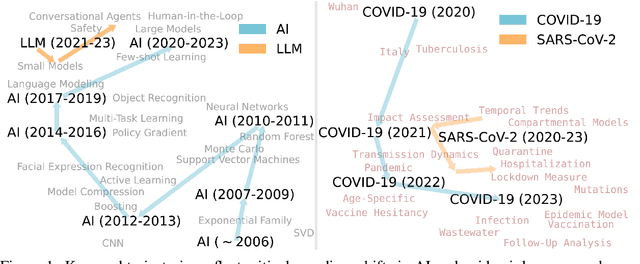
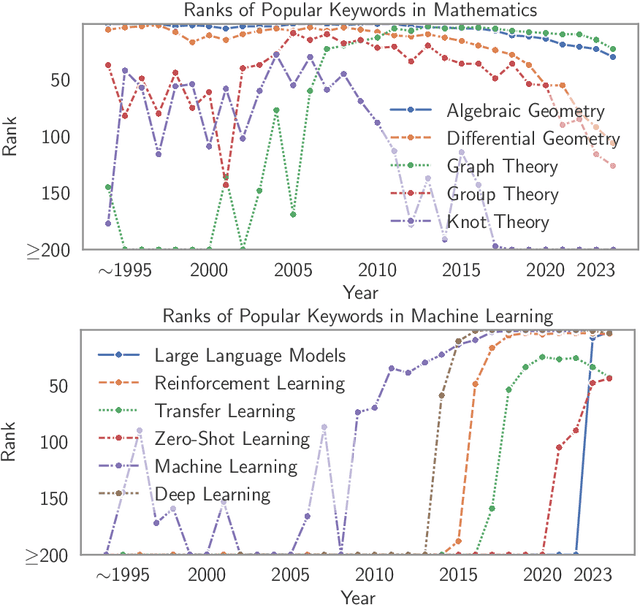

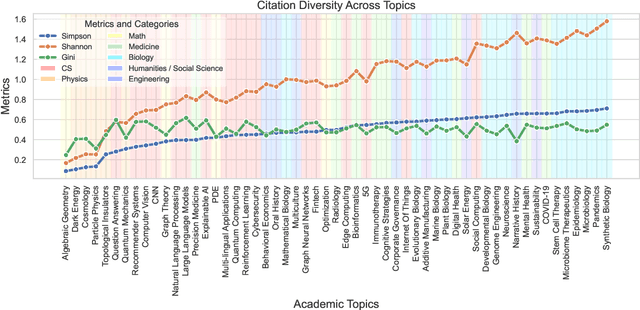
Abstract:Understanding the creation, evolution, and dissemination of scientific knowledge is crucial for bridging diverse subject areas and addressing complex global challenges such as pandemics, climate change, and ethical AI. Scientometrics, the quantitative and qualitative study of scientific literature, provides valuable insights into these processes. We introduce Scito2M, a longitudinal scientometric dataset with over two million academic publications, providing comprehensive contents information and citation graphs to support cross-disciplinary analyses. Using Scito2M, we conduct a temporal study spanning over 30 years to explore key questions in scientometrics: the evolution of academic terminology, citation patterns, and interdisciplinary knowledge exchange. Our findings reveal critical insights, such as disparities in epistemic cultures, knowledge production modes, and citation practices. For example, rapidly developing, application-driven fields like LLMs exhibit significantly shorter citation age (2.48 years) compared to traditional theoretical disciplines like oral history (9.71 years).
KUNPENG: An Embodied Large Model for Intelligent Maritime
Jul 12, 2024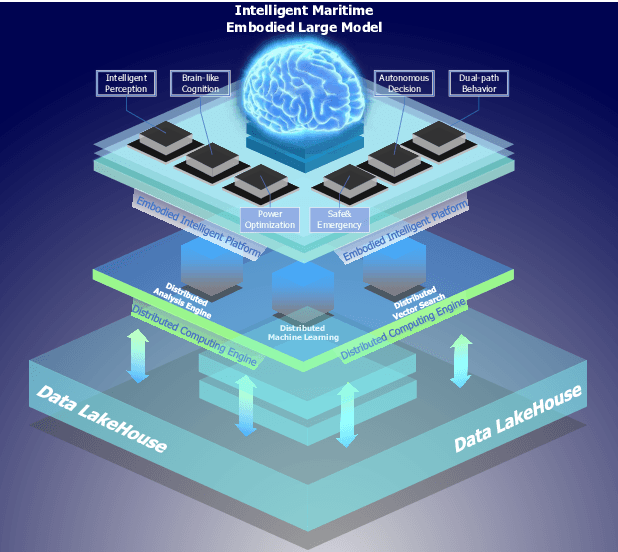
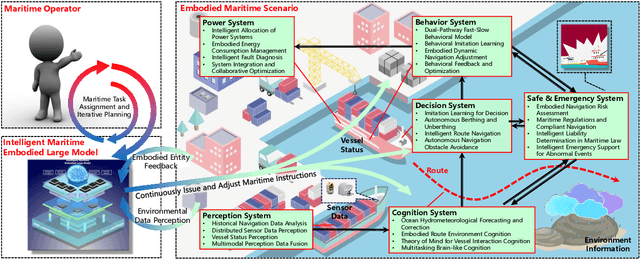
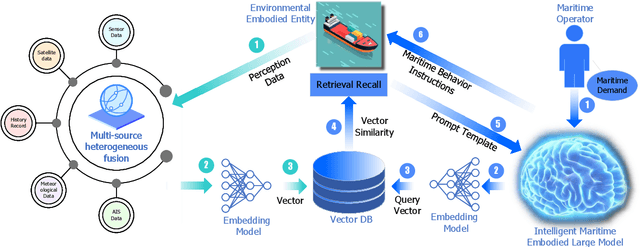
Abstract:Intelligent maritime, as an essential component of smart ocean construction, deeply integrates advanced artificial intelligence technology and data analysis methods, which covers multiple aspects such as smart vessels, route optimization, safe navigation, aiming to enhance the efficiency of ocean resource utilization and the intelligence of transportation networks. However, the complex and dynamic maritime environment, along with diverse and heterogeneous large-scale data sources, present challenges for real-time decision-making in intelligent maritime. In this paper, We propose KUNPENG, the first-ever embodied large model for intelligent maritime in the smart ocean construction, which consists of six systems. The model perceives multi-source heterogeneous data for the cognition of environmental interaction and make autonomous decision strategies, which are used for intelligent vessels to perform navigation behaviors under safety and emergency guarantees and continuously optimize power to achieve embodied intelligence in maritime. In comprehensive maritime task evaluations, KUNPENG has demonstrated excellent performance.
AgentReview: Exploring Peer Review Dynamics with LLM Agents
Jun 18, 2024



Abstract:Peer review is fundamental to the integrity and advancement of scientific publication. Traditional methods of peer review analyses often rely on exploration and statistics of existing peer review data, which do not adequately address the multivariate nature of the process, account for the latent variables, and are further constrained by privacy concerns due to the sensitive nature of the data. We introduce AgentReview, the first large language model (LLM) based peer review simulation framework, which effectively disentangles the impacts of multiple latent factors and addresses the privacy issue. Our study reveals significant insights, including a notable 37.1% variation in paper decisions due to reviewers' biases, supported by sociological theories such as the social influence theory, altruism fatigue, and authority bias. We believe that this study could offer valuable insights to improve the design of peer review mechanisms.
Zero-shot Image Editing with Reference Imitation
Jun 11, 2024



Abstract:Image editing serves as a practical yet challenging task considering the diverse demands from users, where one of the hardest parts is to precisely describe how the edited image should look like. In this work, we present a new form of editing, termed imitative editing, to help users exercise their creativity more conveniently. Concretely, to edit an image region of interest, users are free to directly draw inspiration from some in-the-wild references (e.g., some relative pictures come across online), without having to cope with the fit between the reference and the source. Such a design requires the system to automatically figure out what to expect from the reference to perform the editing. For this purpose, we propose a generative training framework, dubbed MimicBrush, which randomly selects two frames from a video clip, masks some regions of one frame, and learns to recover the masked regions using the information from the other frame. That way, our model, developed from a diffusion prior, is able to capture the semantic correspondence between separate images in a self-supervised manner. We experimentally show the effectiveness of our method under various test cases as well as its superiority over existing alternatives. We also construct a benchmark to facilitate further research.
Adversarial Online Learning with Variable Plays in the Pursuit-Evasion Game: Theoretical Foundations and Application in Connected and Automated Vehicle Cybersecurity
Oct 26, 2021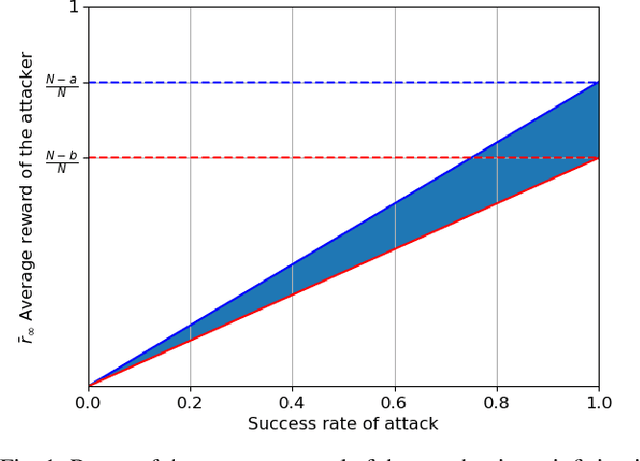
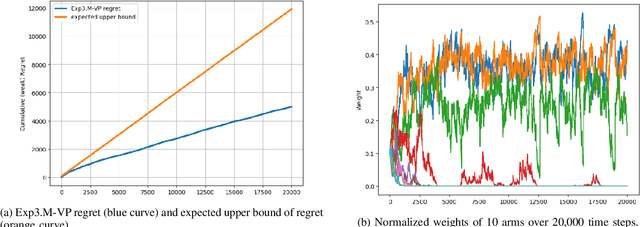
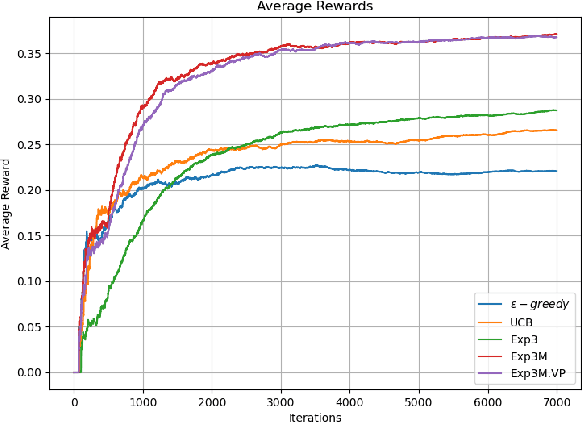
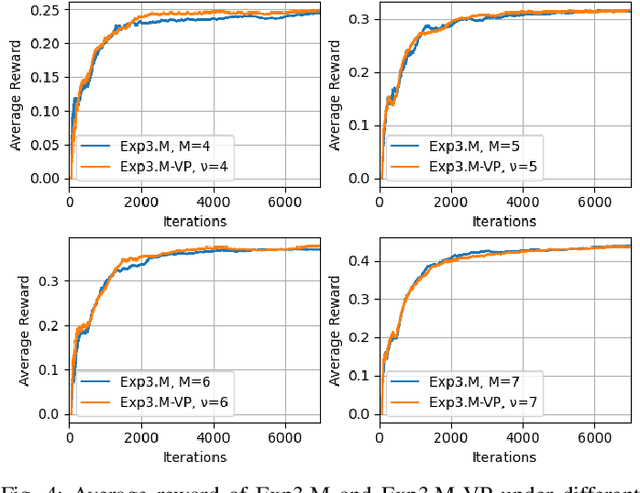
Abstract:We extend the adversarial/non-stochastic multi-play multi-armed bandit (MPMAB) to the case where the number of arms to play is variable. The work is motivated by the fact that the resources allocated to scan different critical locations in an interconnected transportation system change dynamically over time and depending on the environment. By modeling the malicious hacker and the intrusion monitoring system as the attacker and the defender, respectively, we formulate the problem for the two players as a sequential pursuit-evasion game. We derive the condition under which a Nash equilibrium of the strategic game exists. For the defender side, we provide an exponential-weighted based algorithm with sublinear pseudo-regret. We further extend our model to heterogeneous rewards for both players, and obtain lower and upper bounds on the average reward for the attacker. We provide numerical experiments to demonstrate the effectiveness of a variable-arm play.
* Published in IEEE Access. DOI: 10.1109/ACCESS.2021.3120700
Anomaly Detection in Connected and Automated Vehicles using an Augmented State Formulation
Apr 18, 2020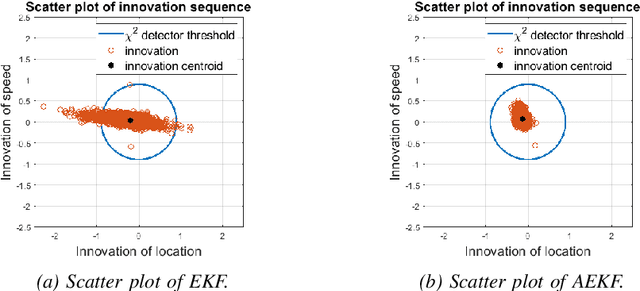
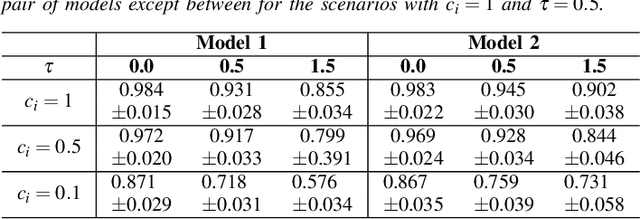
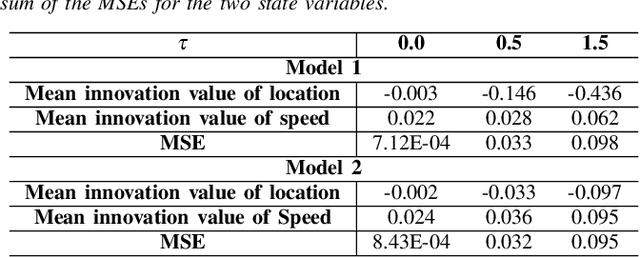
Abstract:In this paper we propose a novel observer-based method for anomaly detection in connected and automated vehicles (CAVs). The proposed method utilizes an augmented extended Kalman filter (AEKF) to smooth sensor readings of a CAV based on a nonlinear car-following motion model with time delay, where the leading vehicle's trajectory is used by the subject vehicle to detect sensor anomalies. We use the classic $\chi^2$ fault detector in conjunction with the proposed AEKF for anomaly detection. To make the proposed model more suitable for real-world applications, we consider a stochastic communication time delay in the car-following model. Our experiments conducted on real-world connected vehicle data indicate that the AEKF with $\chi^2$-detector can achieve a high anomaly detection performance.
 Add to Chrome
Add to Chrome Add to Firefox
Add to Firefox Add to Edge
Add to Edge